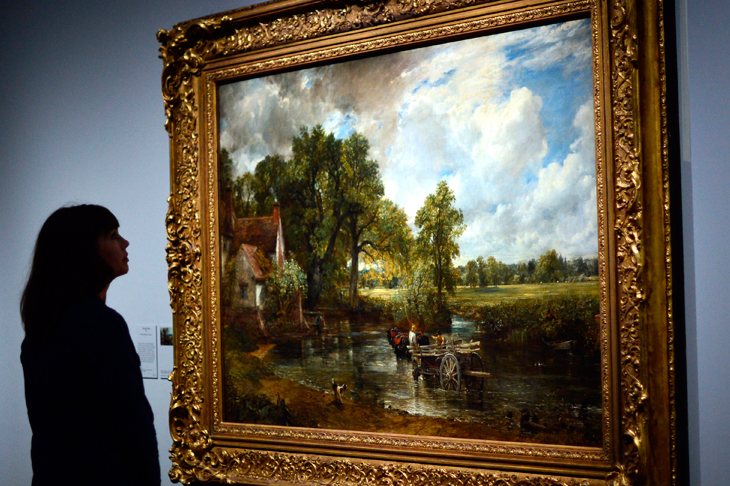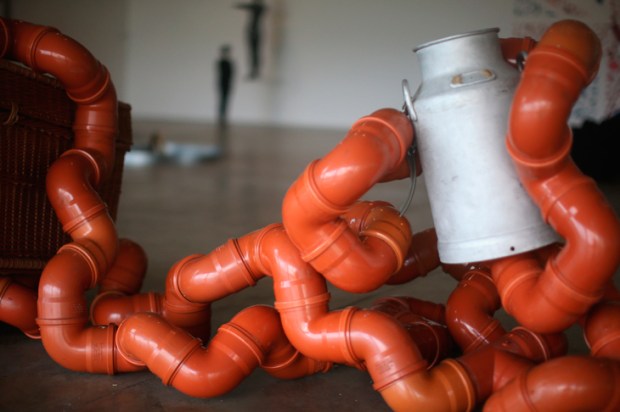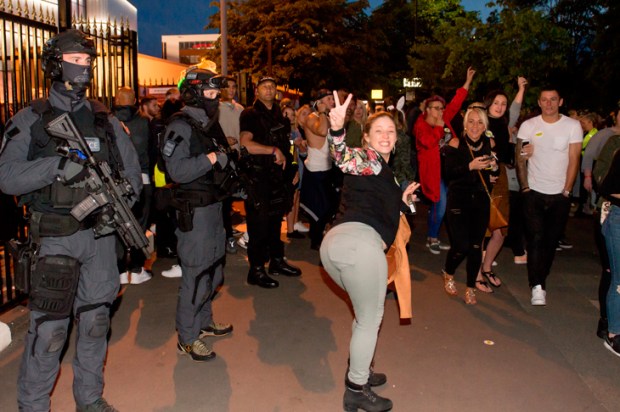‘Come and take a look at this – you’re not going to believe it’ my wife called out recently from another room. The precise cause for her amazement was the very rare coverage by ABC TV of a major so-called ‘cultural’ event. In short a display of putative works of art shortlisted for this year’s very valuable $100,000 Ramsay Foundation Prize at the Art Gallery of South Australia in Adelaide. A somewhat garrulous gentleman introduced the shortlisted works with exemplary enthusiasm: a large patchwork quilt followed by an ‘indoor’ tent of peculiarly vivid hue in the deep folds of which we might all apparently ‘do our own thing’. Somewhat sadly for me I was not in the least surprised by what I saw since I have been witnessing exactly this kind of thing internationally now for at least forty years. On the other hand I did rather imagine that the admirable donors of this generous prize – who are now no longer with us – would have been at least mildly astonished by what in theory at least could once have been set before them.
Yet what I have described, of course, is what a great deal of art has ‘become’ now in an age when views such as mine – along with those of almost every other rational being on the planet – are deemed merely ‘quaint’ or ‘reactionary’ by the organisers and promoters of events such as these. Curiously enough, however, I had been lucky enough to see an absolutely magnificent exhibition of patchwork and other quilts at a gallery in Hamilton in West Victoria not long after I arrived in Australia more than twenty years ago. Quilts, which were probably made almost entirely by women in those distant, ‘unenlightened’ times, were also in those days very generally regarded as ‘craft’ rather than as art. Tents, in the present tense at least, are now apparently also classed similarly as ‘artworks’ – a term of relatively recent standing with which I first became familiar while working as a visiting lecturer in British art schools back in the 1980s.
‘My artwork challenges the existing paternalistic paradigm’ a series of female students, who were often uncertain as yet about which end of a pencil to use, would very kindly explain to me. Or ‘my artwork is about the trauma I suffered when my twin sister’s rabbit was run over by a truck’ as a postgraduate female student in her mid-twenties once similarly told me when one of my tutorial visits took me to the formerly prestigious Slade School of Art in London. ‘How old were you at the time?’ I asked – with every appearance of sympathy. ‘Eleven’ she replied. ‘And has nothing at all of consequence happened to you in your life since then?’ I inquired with similar politeness.
Students were being encouraged by their tutors at that time to dredge their memories for anything of any supposed significance at all as a suitable subject for their paintings. The ‘dead rabbit’ memory in pictorial form was already well on its way, in fact, to occupying a formerly pristine canvas of monumental size. Even van Gogh at his finest was never able to paint on such a magnificent scale as this.
So where and when then was the infantile-seeming heresy that anything can now be considered art and everyone an artist first visited upon us? The answer is when it was inscribed on the wall of a building in Paris – in French of course – during the juvenile student riots there of 1968. But why do we still have to believe in this immature pseudo-revolutionary nonsense in Australia nearly fifty years after the event? Should we perhaps remember that when John Constable’s ground-breaking painting The Hay Wain won an internationally prestigious gold medal at the Paris Salon in 1824 it was not required to compete either with bed linen or with tents – even if the latter may have been historic leftovers from the battle of Waterloo. In a similar vein, to the best of my knowledge, mandarin oranges have never been required to compete directly with marrows at agricultural fairs. But nowadays we know better than our predecessors about each and every subject and can thus compare anything with anything else at all entirely as the fancy takes us – even in the awarding of $100,000 prizes.
Over my former professional career I have certainly been asked to judge many prizes which were given for the archaic subjects of painting and drawing and was even asked to determine the rules and conditions for quite a number of these – including one run successfully for many years by The Spectator in conjunction with a private Scottish bank. Certainly, our prize money was far from vast, yet the competition attracted many hundreds of entries from artists who sensed that our particular competition might be run fairly because it was judged by people who knew exactly what they were doing. For example, one major painter was always on our judging panel. Here we may care to contrast such a prize with another of Australia’s finest – the Archibald – which is regularly judged by bankers and other businessmen. Should I now offer my humble services perhaps for the judging of some major business prize?
The world of the visual arts, like almost every other aspect of our novel culture, has been a virtual train wreck now for approaching half a century. Oddly enough, such collapse coincided closely with the beginning of so-called ‘conceptual’ art, the basic object of which was to deny art dealers physical objects with which to trade, thus hastening the (longed for) demise of capitalism.
The attempted politicisation of art, like every other single aspect of post-modernism, has already proved an unmitigated disaster. Indeed, the dismissal of aesthetic judgement by so-called neo-Marxists as a ‘boogewa’ conceit is thus far possibly our present age of idiocy’s crowning glory.
Got something to add? Join the discussion and comment below.
Get 10 issues for just $10
Subscribe to The Spectator Australia today for the next 10 magazine issues, plus full online access, for just $10.
You might disagree with half of it, but you’ll enjoy reading all of it. Try your first month for free, then just $2 a week for the remainder of your first year.














